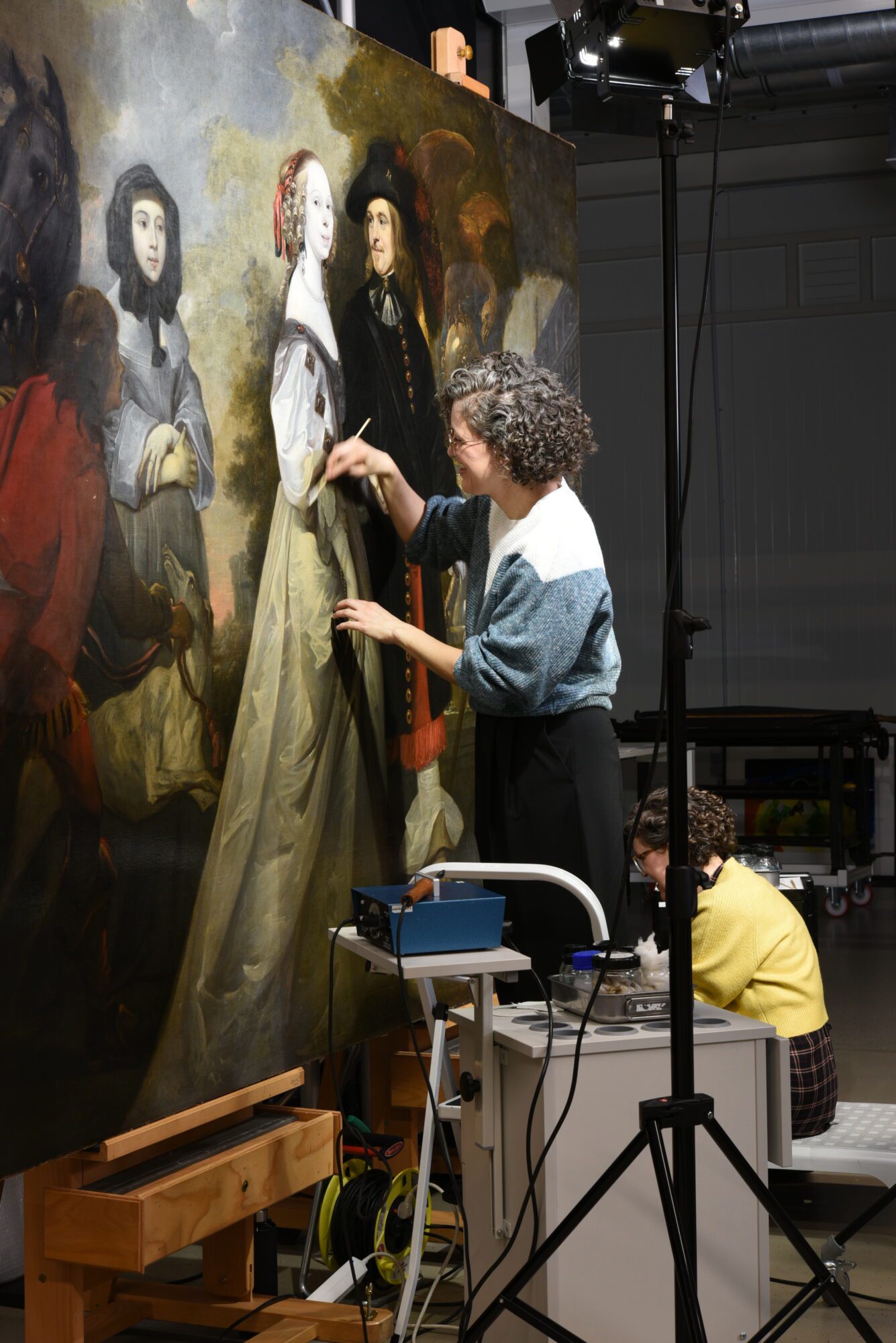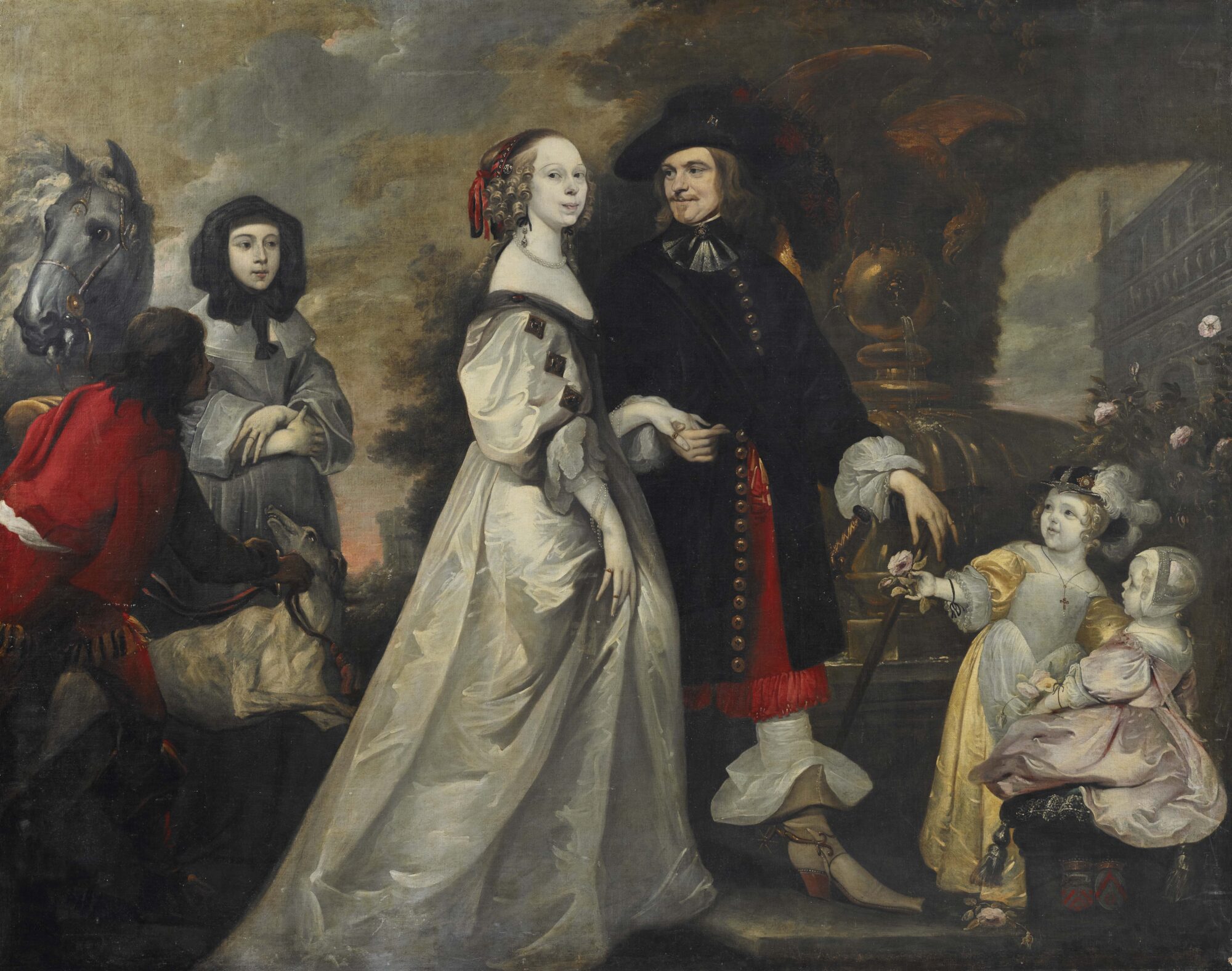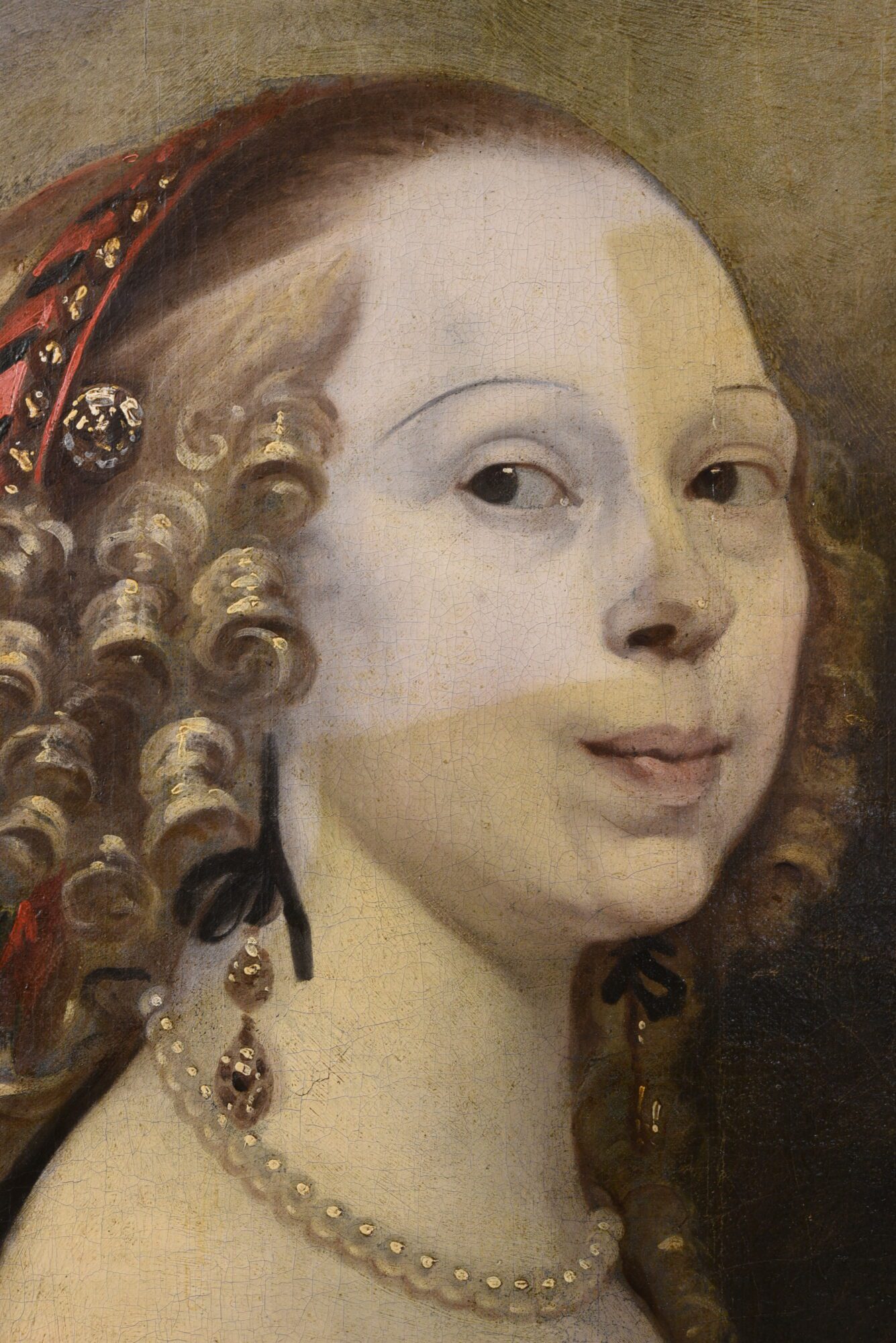Behind the scenes with Jill and Ellen Keppens
This month, we go behind the scenes with twin sisters Jill and Ellen Keppens, who are currently restoring the seventeenth-century portrait of a nobleman from the Volpi family with his wife and children.
“A while ago, we were introduced to the Volpi family. This intriguing family of important diamond merchants, some with Italian roots, was active in 17th-century Antwerp. The fact that they were good at doing business is amply demonstrated in this portrait, through the depiction of white silk, pearls, diamond jewellery, lace, feathers, impressive buttons, a horse, a greyhound, their coats of arms and even the imposing footwear.”

“Besides all this opulence, something else extraordinary catches the eye. The extremely pale incarnations of the woman in the white silk dress and the two children immediately catch the eye. Why their skin is so white is still a mystery. Has the pigment become discoloured and transparent? Does the white skin show their privileged position? Or were they already deceased when this portrait was painted? More research on the family may provide an answer here.”


“The white incarnate is not the only ‘strange colour’ that stands out. The clouds also look bizarre. This is because the sky around it is discoloured. At one time, it must have had a strong blue colour, but the artist used smalt as a pigment. 17th-century artists often used this pigment containing cobalt because it was cheaper than the expensive ultramarine, yet could still obtain a nice blue colour. Unfortunately, it is also very unstable and over time, it often turns brown, yellow, grey, or becomes transparent.”

Curious about the final result? Keep an eye on our social media and website!